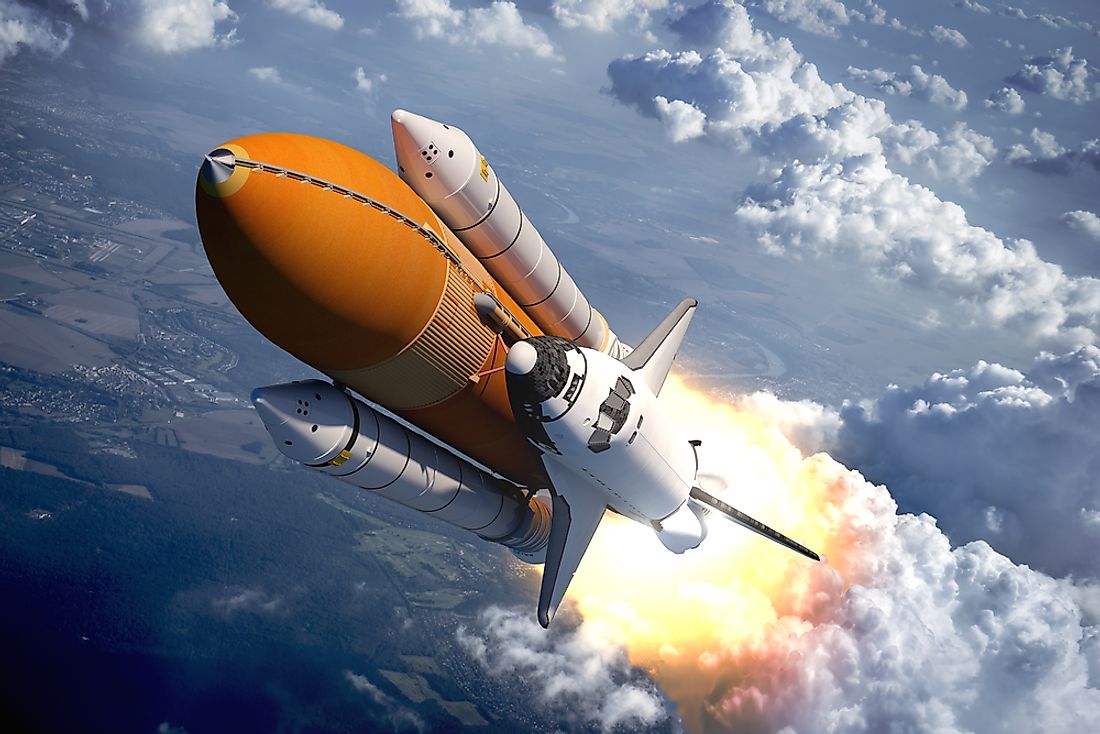Worst Space Shuttle Disasters

Taking on a mission to space has many risks and dangers for astronauts, whether it is on the way up to space or the return trip home. The worst space disasters of all time are the Space Shuttle Columbia Disaster of 2003 and the Space Shuttle Challenger Disaster of 1986. In both cases, seven astronauts lost their lives. Here is a list of the worst space-related disasters to ever have occurred.
Soyuz 11
The USSR's Soyuz 11 launched on June 6, 1971, with the mission to board the world's first space station Salyut 1. They arrived at Salyut 1 a day after launch and departed the station and landed back on Earth on June 30, 1971. However, when the recovery team opened the re-entry module they found cosmonauts Georgy Dobrovolsky, Vladislav Volkov and Viktor Patsayev dead inside.
It was later determined that a breathing ventilation value had been jolted open as the descent module separated from the service module of the Soyuz 11. This event caused the capsule to depressurize, causing the crew to die of asphyxiation. As a result of this tragedy, the Soyuz spacecraft was redesigned to only carry two cosmonauts so that there was room for the crew to wear special space suits which help to keep them alive in case of decompression. The crew of Soyuz 11 are honored with a memorial at the spot where it crashed in the Karaganda Region of Kazakhstan.
The Space Shuttle Challenger
On January 28, 1986, the Space Shuttle Challenger, on its tenth mission, lifted off from the Kennedy Space Center in Florida. The mission ended catastrophically with the Challenger disintegrating only 73 seconds after launch. All seven crew members, Francis Scobee, Michael Smith, Ellison Onizuka, Judith Resnik, Ronald McNair, Gregory Jarvis and Christa McAuliffe, were killed.
In the investigations following the disaster, it was never established as to how and when the crew exactly died. It was determined that the cause of the accident was the failure of the primary and secondary O-ring seals on the right rocket booster. This technical failure set off a series of reactions that resulted in the disintegration of the shuttle. In response to the tragedy, NASA grounded the shuttle fleet for almost three years while a government commission investigated the accident and the space shuttle's rocket boosters underwent a complete redesign. The crew of Challenger is honored with a memorial in Arlington National Cemetery in Virginia.
The Space Shuttle Columbia
On January 16th, 2003 the Space Shuttle Columbia lifted off on its 28th mission. Columbia's purpose was to conduct different scientific experiments while in orbit, which they succeeded in their mission. On February 1, 2003, Columbia disintegrated upon re-entry into Earth's atmosphere. All seven crew members, Rick Husband, William McCool, David Brown, Kalpana Chawla, Michael Anderson, Laurel Clark and IIan Ramon, were killed. It is unknown how the crew died, but NASA's report after the event suggested it was due to asphyxiation or lethal trauma.
It was determined later that a piece of foam insulation broke off from the external tank and struck the left wing of the orbit upon the launch of the shuttle. This event caused hot atmospheric gasses to penetrate the shuttle upon re-entry, destroying the internal wing structure, which caused the shuttle to break apart. The Columbia disaster resulted in the shuttle program being suspended, thus delaying construction of the International Space Station. The crew of the Columbia is honored with a memorial in Arlington National Cemetery and Sabine County, Texas.
Soyuz 1
On April 24, 1967, after only a one day mission filled with technical problems the flight director of the Soyuz 1 ordered cosmonaut Vladimir Komarov to come back into orbit. Upon re-entry, the drogue parachute of the re-entry module deployed but the main parachute did not. Komarov then activated the reserve chute, but it became entangled with the drogue parachute, which did not deploy correctly.
As a result of the parachute failure, the re-entry module fell to Earth almost entirely unimpeded, killing Komarov upon impact with the ground. The tragic result of the Soyuz 1 mission caused Soyuz 2 and 3 to be delayed and helped to scuttle Soviet plans of landing men on the moon. As a result of the delay, the Soyuz program ended up being much improved. Vladimir Komarov is commemorated with two memorials on the Moon and one at the spot where the Soyuz crashed landed in the Province of Orenburg, Russia.
Disastrous Space Flights In History
| Rank | Disaster and Mission | Date | Fatalities |
|---|---|---|---|
| 1 | Space Shuttle Columbia Disaster | February 1, 2003 | 7 |
| 2 | Space Shuttle Challenger Disaster | January 28, 1986 | 7 |
| 3 | Decompression, Soyuz 11 | June 30, 1971 | 3 |
| 4 | Parachute failure, Soyuz 1 | April 24, 1967 | 1 |











